The Art of Speed: The Apex Interviews Stefan Johansson
This week on the Apex we are delighted to feature Formula 1 driver, Le Mans winner, artist and designer Stefan Johansson. Stefan's long and varied racing career has taken him all over the world, and has seen him race incredible machinery with some of the greatest names in motorsport. To top it all off, after stepping away from driving duties he has established himself as a successful painter and watch designer, while continuing to share his wisdom and experience as manager of a number of talented pro racing drivers. He spoke to us about life in Formula 1’s turbo era, wild times at Le Mans, and how the mentality of artists and drivers is closer than you think...
Hector Kociak interviews Stefan Johansson for The Apex by Custodian. Recorded and Produced by Jeremy Hindle and Guillaume Campos. Transcribed by David Marcus. Edited by Hector Kociak & Charles Clegg.
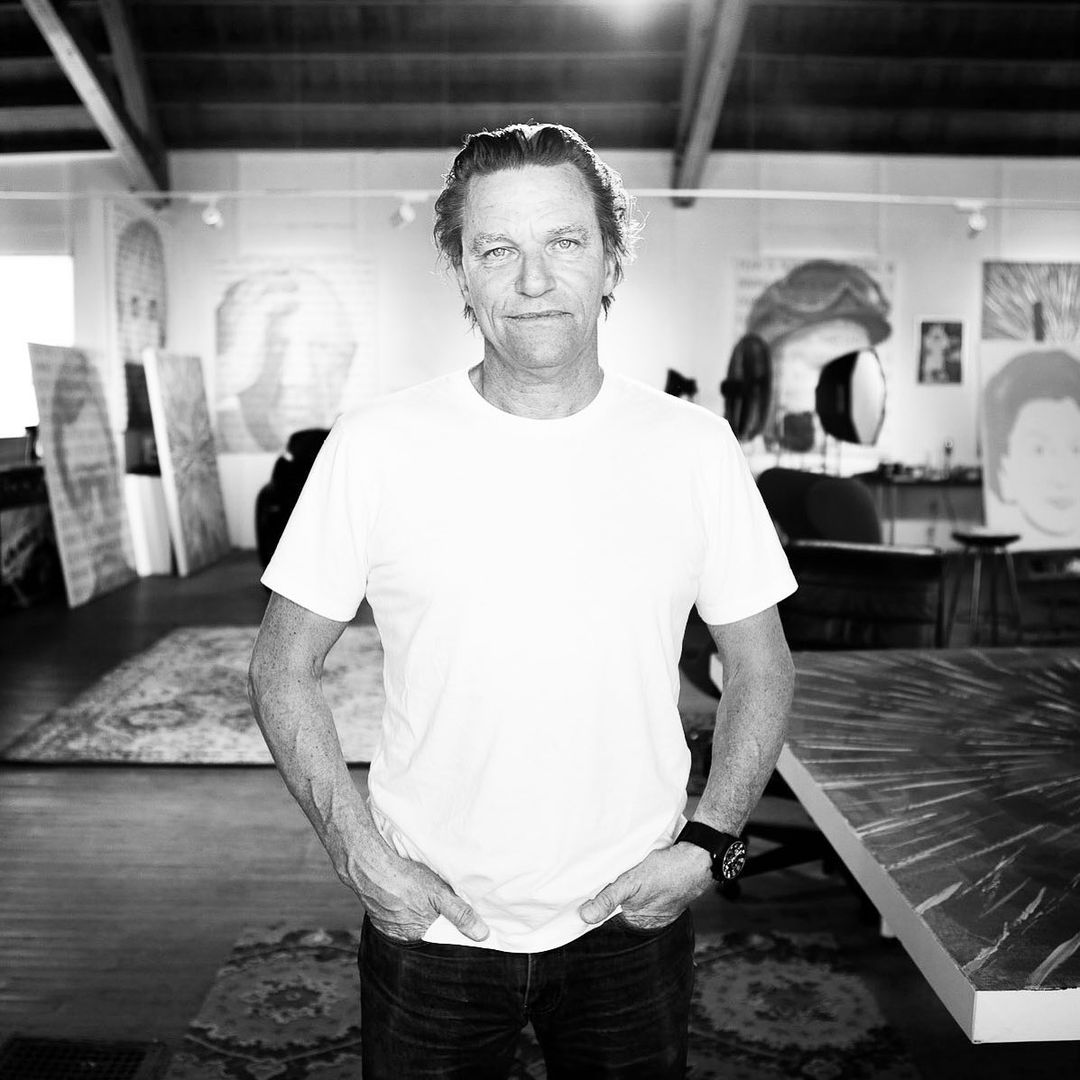
You're one of the most experienced racing drivers in the world, and you’ve raced in everything from Formula 1 to sports cars to CART. How did a young Stefan Johansson first enter the world of cars and racing?
I sort of grew up with it. My dad was a club racer back in Sweden, so I used to go to races with him when I was three or four years old. I kind of lived in that world on a smaller scale. I was also playing a lot of ice hockey (like everybody does in Sweden), it’s the national sport over there, and was doing quite well. So it was only when I was about 18, I think, that I chose a racing career rather than try to pursue one as a professional ice hockey player. Around that age was when I began to take it really seriously.
Was it something you did with your family - were you working on cars together, taking them to the race track, that sort of thing?
Yes, very much so, it was definitely a family affair. We used to have a caravan that we modified into half a transporter, with the go-karts underneath the beds... looking back at it now it was actually a great time because everybody there was doing the same thing. There was a good atmosphere in the paddock, everybody was hanging out and all their families were there. It was a nice way to grow up actually.
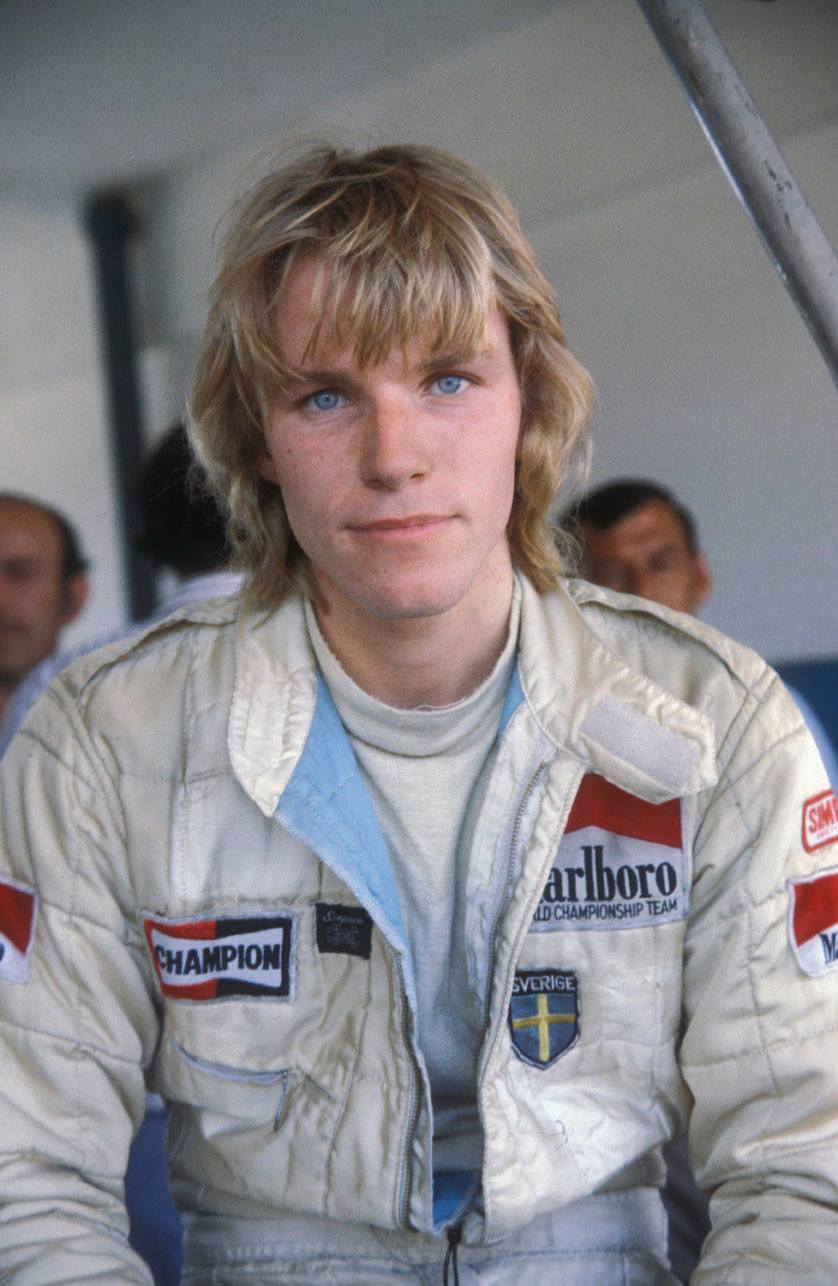
What was the moment when you thought you could do it professionally?
I don't know if there was one watershed moment when I realised. It's a progressive thing, I think. I started in karting and that went quite well - I got into the Swedish national team and it went on from there. It's funny because in my latter years of karting I used to race against Eddie Cheever, Alain Prost, Didier Pironi, Elio de Angelis, Riccardo Patrese, you know, all the guys who eventually ended up in Formula 1!
Ah, so you knew what was coming...
It was such great training for later on. I'm sure it's the same now, but the entire field was covered by a tiny amount of time. 1/10th of a second could be the difference between just making the finals or being on the front row. It was crazy how competitive it was.
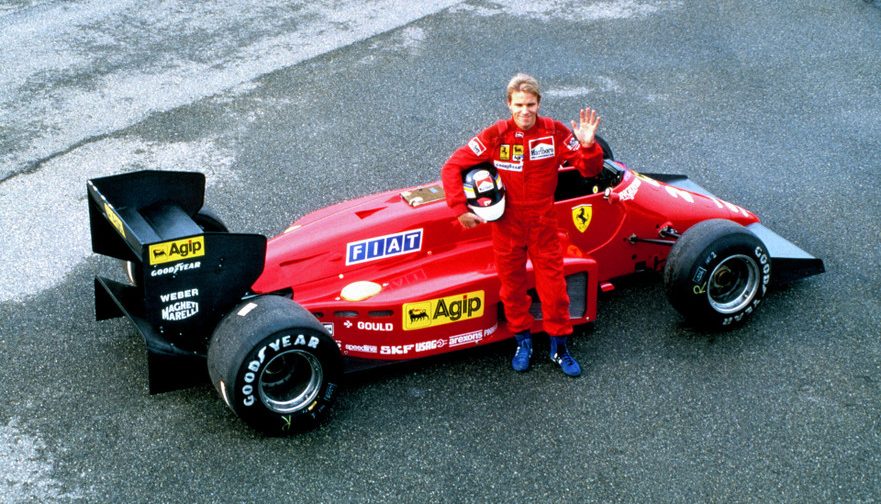
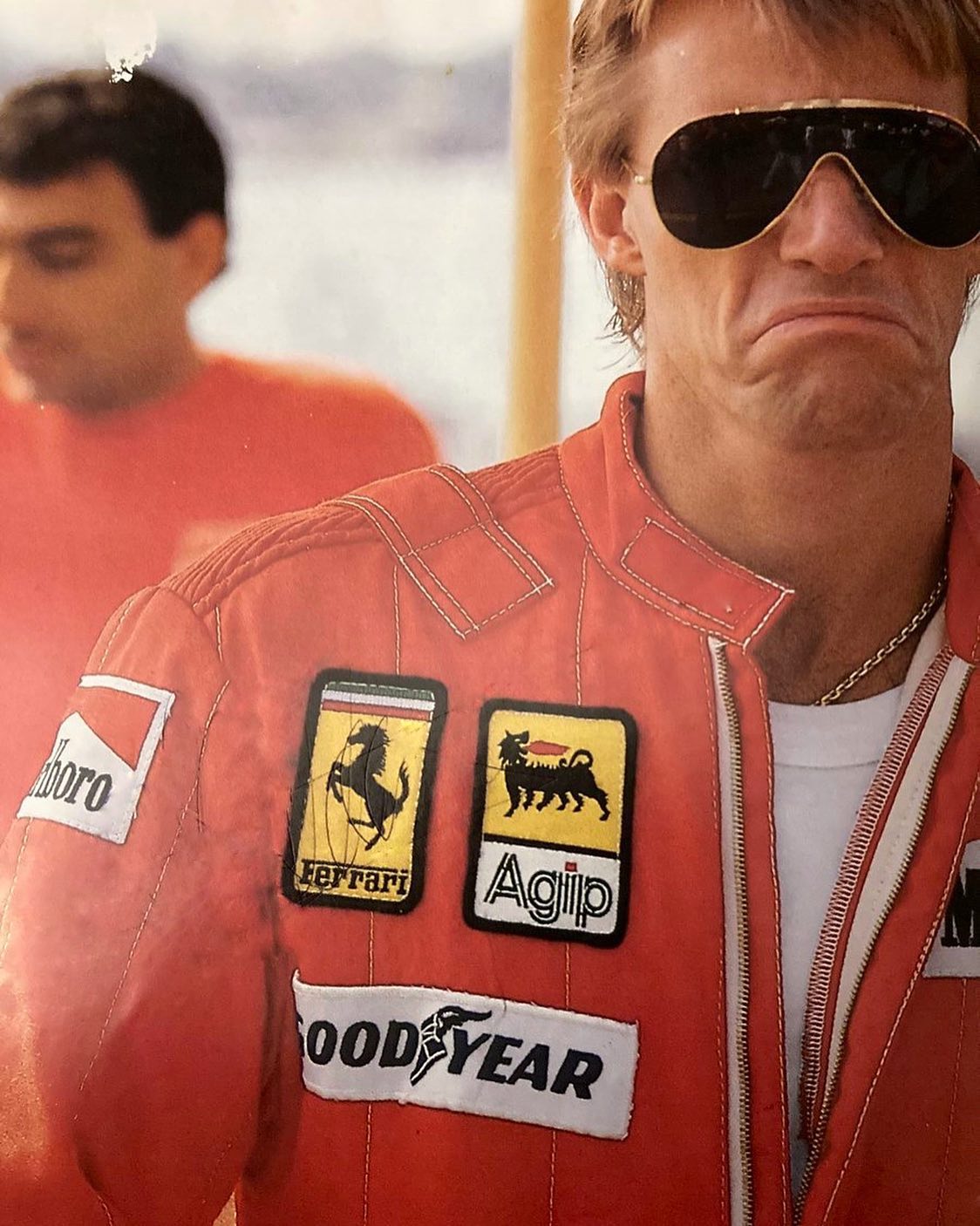
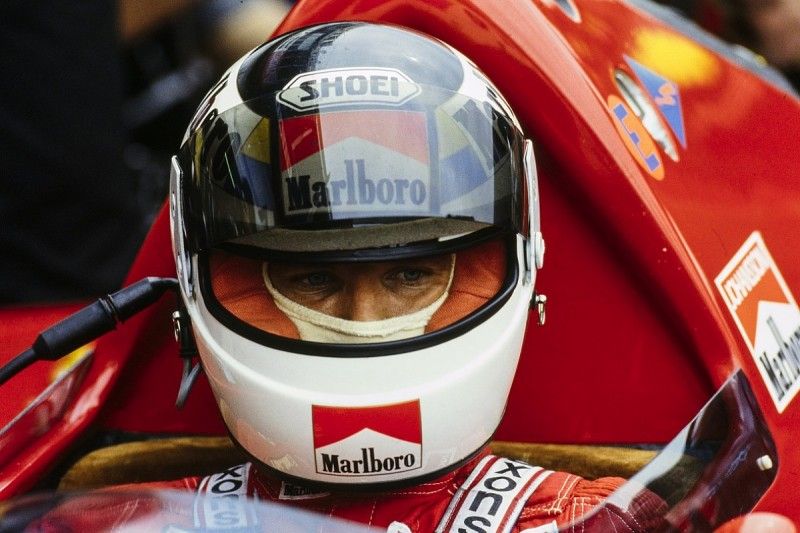
When driving for Ferrari in 1985-86. Credit: Ferrari // unknown
Onto your professional Formula 1 career - it took place in the 1980s, a time that many of us see as a golden era in the sport. How would you describe that decade in racing to a younger listener who only really knows modern Formula 1?
Well, the difference is huge, obviously. The technology wasn't anything remotely like it is today. The cars were wild - I mean all cars back then, not just F1 cars, but Group C cars, sports cars, everything was just about horsepower, and aero wasn't very sophisticated. Of course we had the wing cars with the sliding skirts, which produced an enormous amount of downforce, but that was banned when I came into Formula 1, so it was all about greater horsepower.
In 1985 in particular, before they put any limit on the boost pressure, in qualifying we would literally just put a plate over the waste gate. There was no control whatsoever - the amount of boost you got was what you managed to produce, so I remember in some races we had over 1500 HP in qualifying! Even at Monza, which is a super high speed track with long gears, we used to get wheel spin shifting between fifth and sixth gear. When you shifted from fifth to sixth on the straight in a one lap qualifier, the rear would literally light up. You know, it was crazy, but those were unbelievably exciting cars to drive. They were just raw, brutal, crazy machines.
You look at photos from back in the day and the paddock is just full of people, fans, engineers, everyone is milling about together - was it a time when you’d have a good insight into what the other teams were doing too?
I don't think we knew as much as teams know now, because the espionage that's going on today is way beyond anything that you could even imagine back then. I mean the technology didn't even exist, so it wasn't something you could think about. We didn't even have mobile phones for the most part during that era, so everything was very basic. There was no data. I wish I had data when I was team mates with Alain Prost for example, to figure out what the hell he was doing! It would have been a lot easier, because back then you just had to rely on feel and relay that back to the engineers. That was pretty much the only data you had to go by.

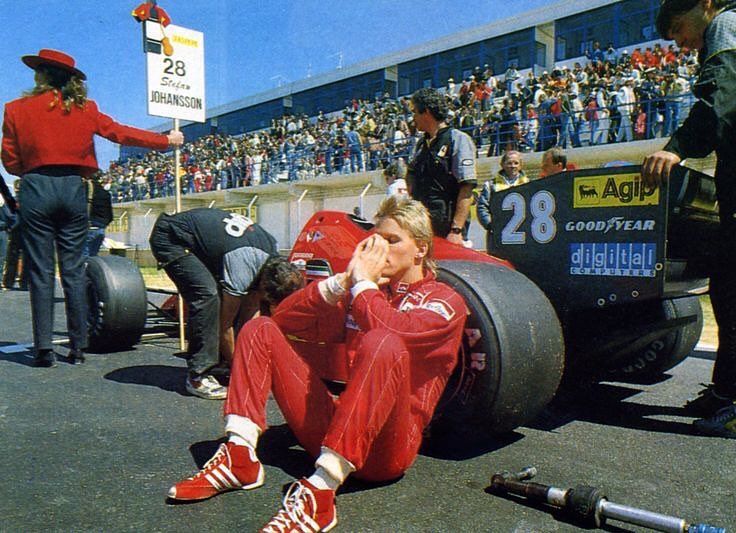
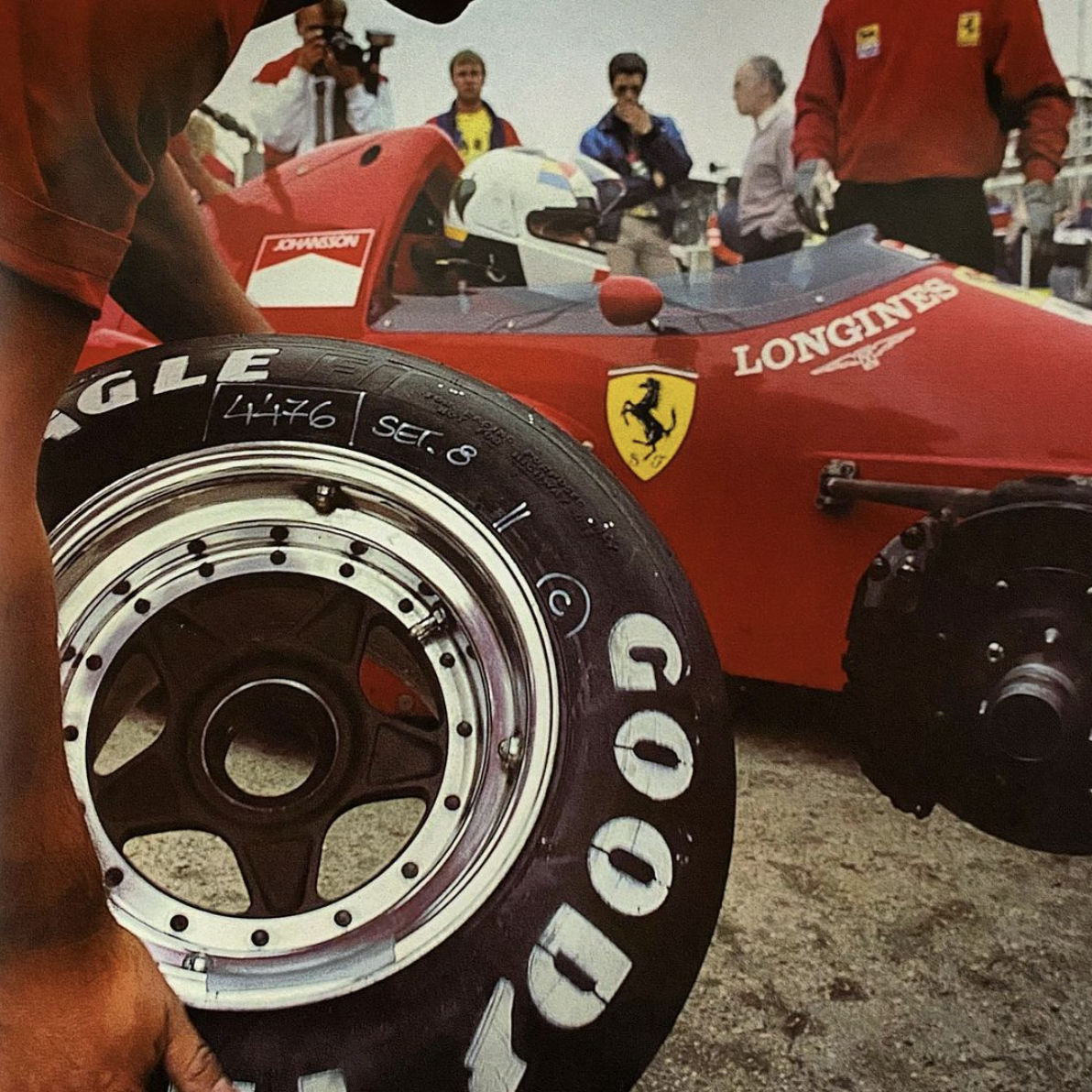
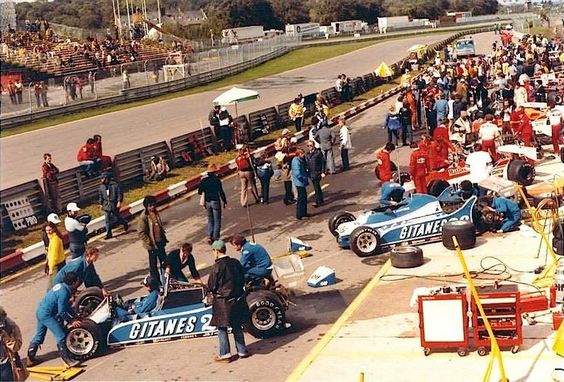

With Bernie Ecclestone and other paddock scenes in the 80's. Source: Stefan Johansson // Credit: unknown
You also had manual shifting in those cars as well. Presumably you had to learn how to get quite good at that, given the speed?
Yes - it was a huge component of the lap time, in fact. Especially in qualifying, because when you had all that power and you couldn't shift quick enough, you’d lose time. I remember I used to spend days down at the Ferrari factory at Maranello on my own, preparing the shift forks inside the gearbox. You have a mental picture of what you are going to do, especially the shift from second to third because it's across the gate. If you get caught there then that's half a second gone, so in qualifying it was a huge advantage if you could shift as quickly as you possibly could.
I spent days filing the forks on my own car. It’s hard to explain. You kind of know what you want, so it was just more efficient to do it on your own with a file just to get it right, or what I thought would be right! I used to sit in that car for hours, and also just memorise the shift movements, because that was one of the key components to a quick lap time.
Given the lack of data, did you have moments where coming back to the pits you would think you’d gone fast, and then you would look at the clock to check whether it just felt fast?
Yes, in a way. At Monaco for example, because you only got one lap on the qualifiers back then, you would just go out, do your qualifying lap, and come in. I remember Tom Maine, who was my engineer, asking me ‘how is the car ?’ and I would be like, ‘...are you fucking kidding?’.
It's because the lap is just a blur, you’re literally holding on for dear life. It’s wheelspin all the way up the hill; you keep shifting, you keep your foot down, and you just keep feeding the gears in because if you lift and try to correct, the car is never pointing straight anyway - it’s just sliding one end to the other all the way up the hill. If for some reason it would have grabbed when you were pointing 45 degrees towards a wall, you’d have just smacked into it and flown off the hill. So it was just keeping your foot down until you got to the top, trying to gather it up. It was literally driving by the seat of your pants, holding on the whole way. No car feel, none of that really mattered because it was just pure horsepower. That's all that mattered!
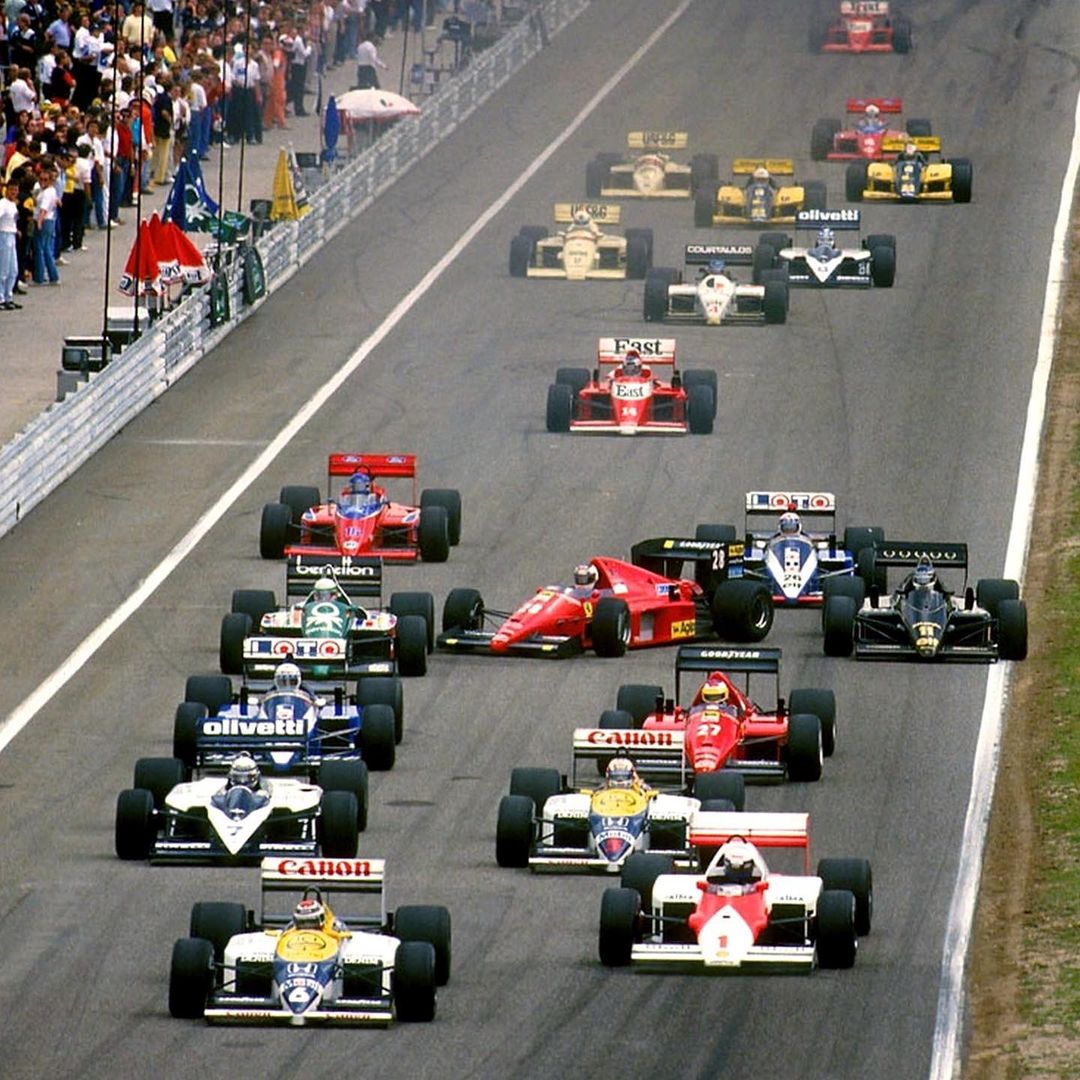
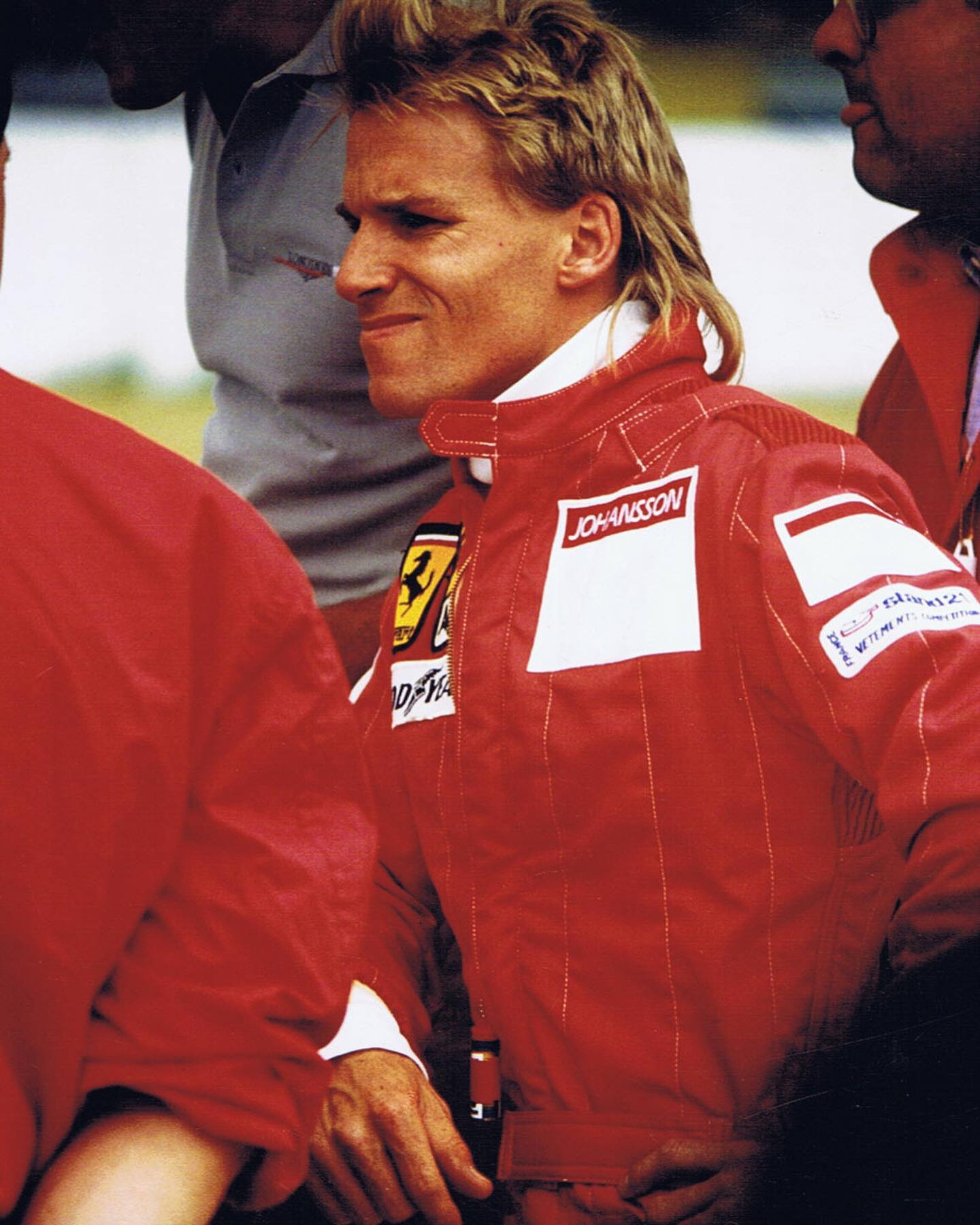
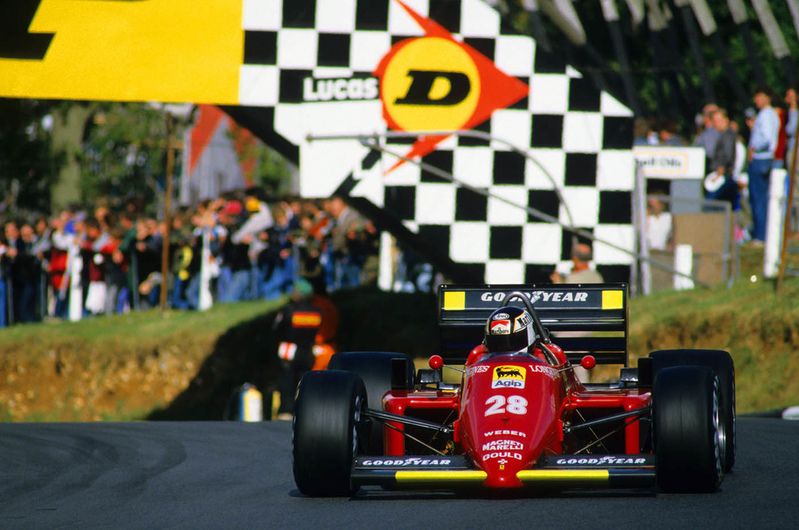

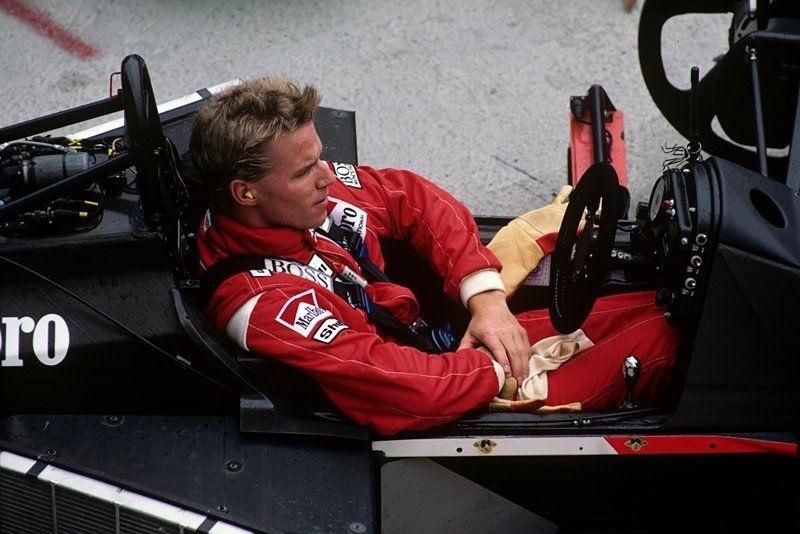
During the years with Ferrari. Source: Stefan Johansson // Credit: unknown
You raced for Ferrari and McLaren in your time, both legendary teams. What are your favourite memories of racing for them and what was it like meeting Enzo in person, and working with Alain Prost, Gordon Murray, and Ron Dennis?
It was fantastic, to be there at the top with the best of the best. Meeting Enzo Ferrari for any driver was an amazing experience, and to be picked by him to drive for his team at the stage where I was in my career was a dream come true.
Almost like a movie, isn't it.
It is, and he was a master of the drama and the mystique. Everything with Enzo was like a Fellini movie.
Dark rooms?
Hah, exactly that. When I met him for the first time it was a secret meeting at the old factory in Modena, not the one in Maranello, which is just basically sitting there dormant. He still had his office there, so we decided to have the meeting there the first time. You walk through this corridor and it's like 5pm in the afternoon, the sun is setting and the rays are coming in, with all the pictures of Nuvolari, Fangio, and Moss on the walls. You get goosebumps just walking down the corridor, and then he's in his room at the very back in the dark, no light, so you can just see the silhouette. I don't think it was meant to be that way, but it was just so dramatic!

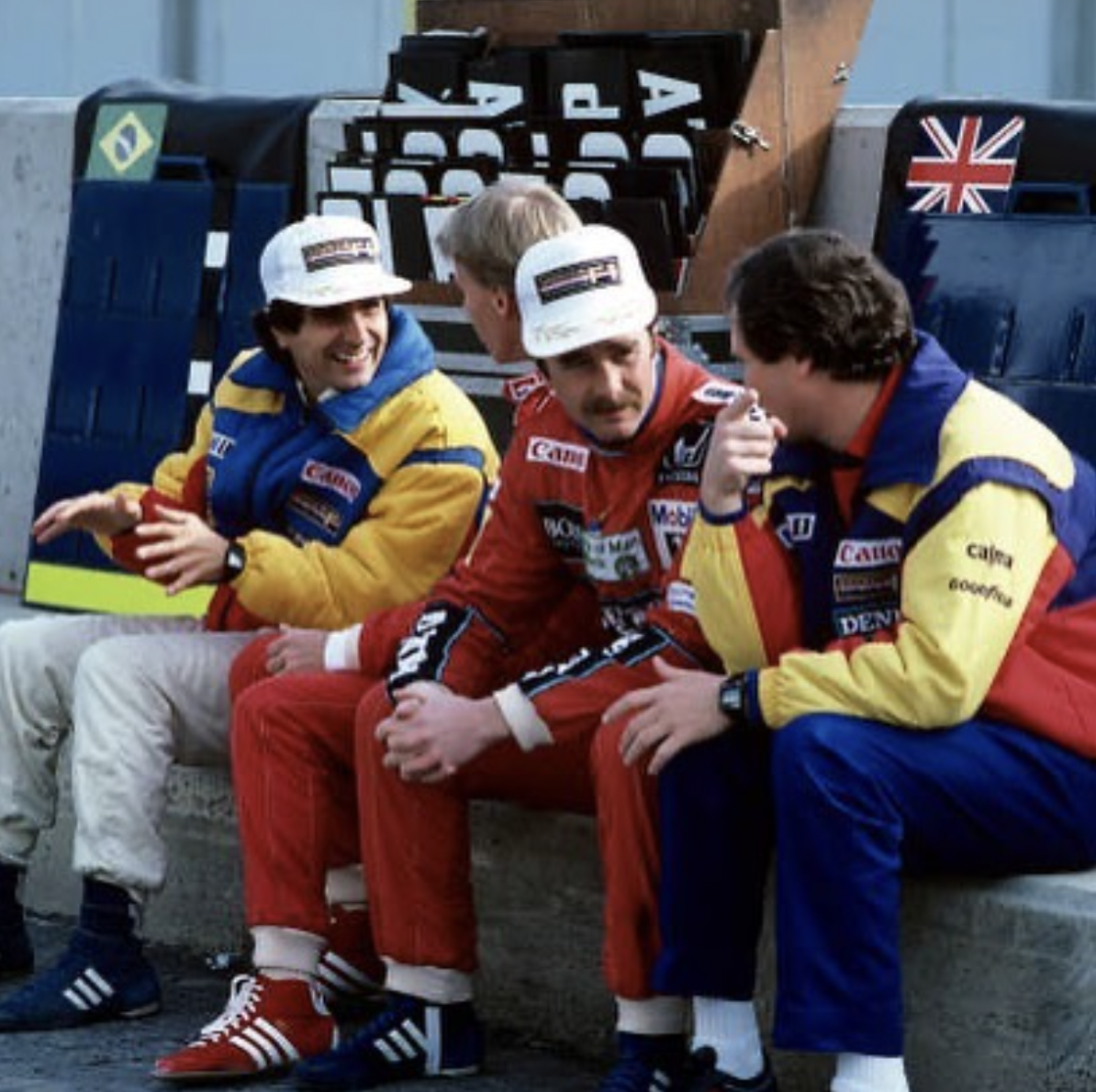
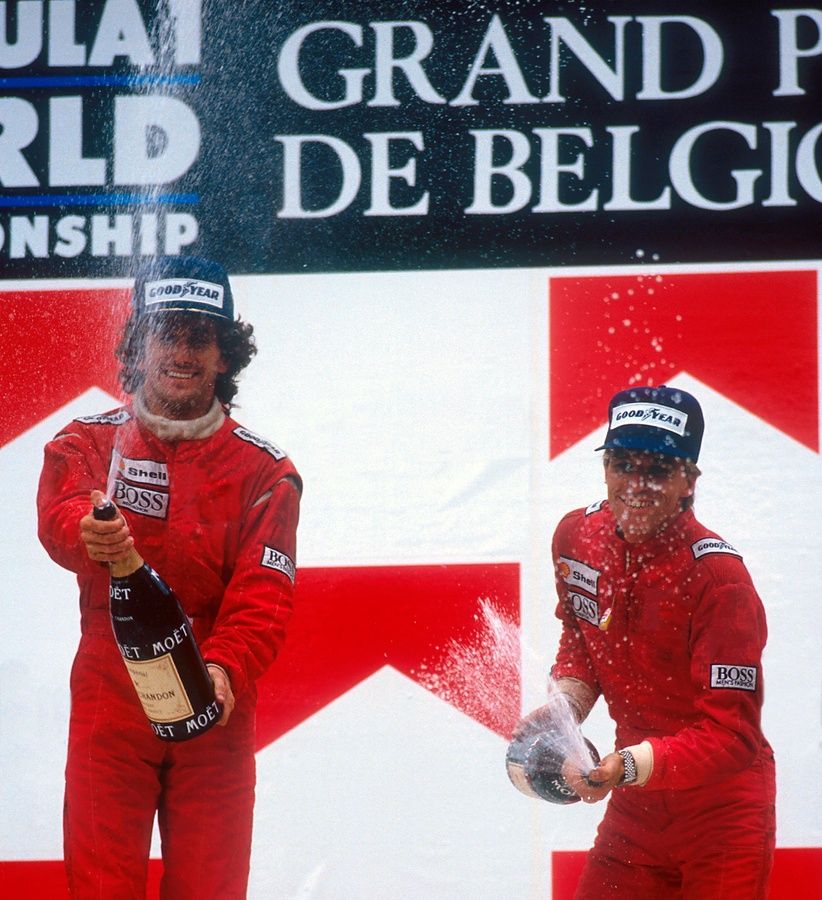
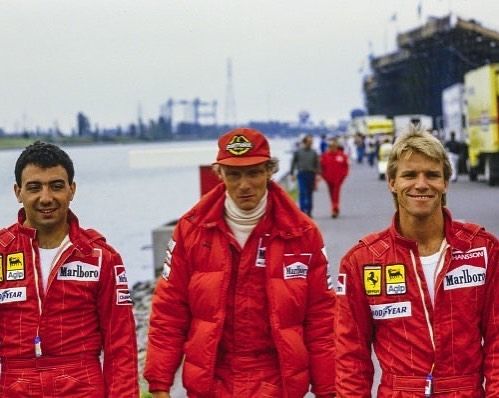
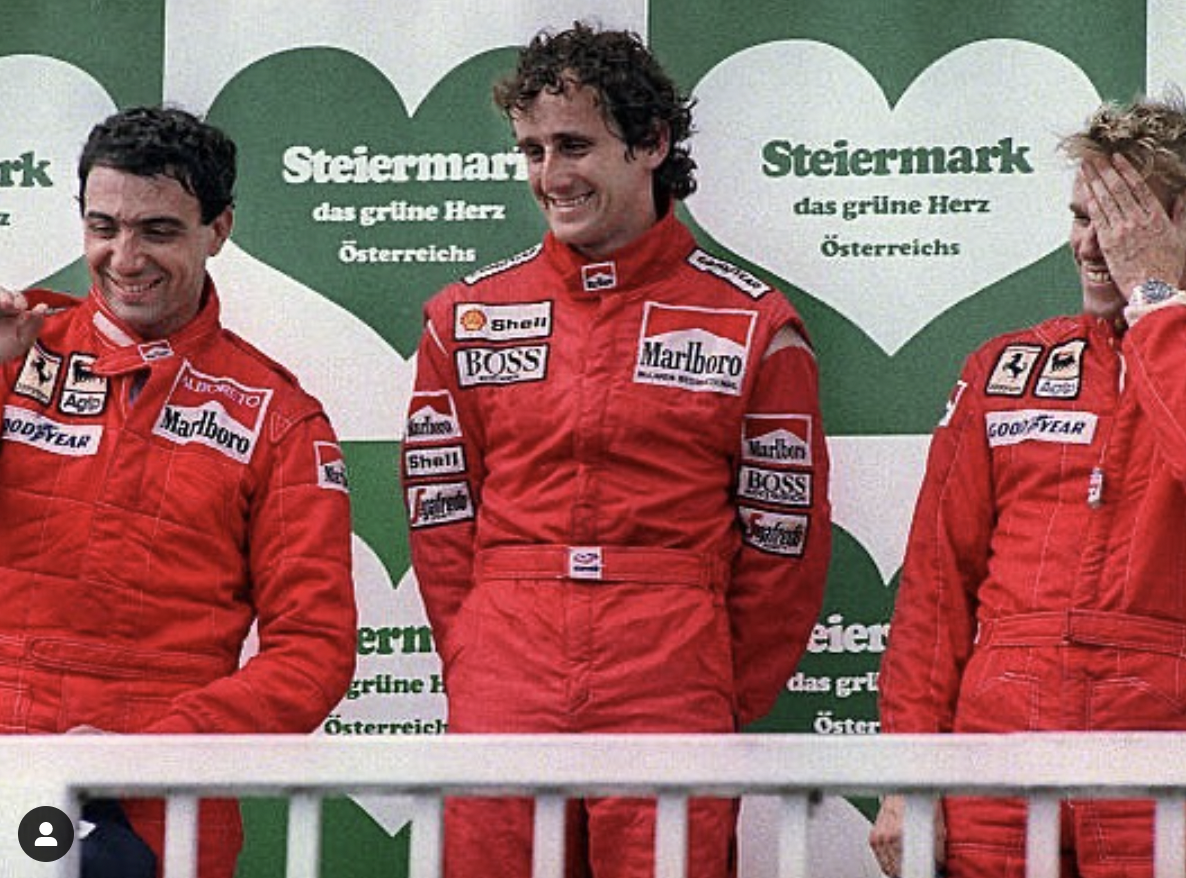
Sharing podiums and often beating some of the titans of the era, including Ayrton Senna, Alain Prost, Nigel Mansell and Niki Lauda. Source: Stefan Johansson // Credit: unknown
You had Ayrton Senna as a team mate at Toleman for a while, and also during the ‘84 Nurburgring 1,000 km if I'm not mistaken. What made him so special, how much interaction did you have with him and what were your impressions of him when you first saw his driving?
Obviously from very early on, from the karting days, a lot of people were aware of him, and then in Formula Ford. He had an extraordinary amount of raw talent, an incredible amount of feel, and developed his own technique, sort of stabbing the throttle all the way through the corner, which in the turbo era was particularly efficient because you could keep the turbos spooled up all the time. But it was more his personality. Had he been a banker he would have been the best banker in the world basically - it was just that mental attitude he had that was totally uncompromising. He was just about the win. In my personal opinion that was maybe to his detriment in the end, that he was about winning at all costs at all times.
However he was extremely efficient in what he did, and relentless in his pursuit to be the best at all times. That's what made him very successful, and I think Schumacher too. Alain Prost was the same, and I think Lewis is now the same; those guys have maybe a few percent more of raw talent than the rest, but the real difference is really in their mental attitude. They're willing to work 20% harder than the rest of them, and just never ever accept anything but being the best. That's what makes the difference.
Did any of the other drivers quietly try to imitate some of his techniques in those turbo cars, or do you think it was just him?
I think everybody did, in a way. I applied that technique a little bit too, it was effective because the turbo lag was massive, especially when you had the boost cranked up all the way in qualifying. If you could get them spooled up just a little bit before you nailed it, then that would help to just diminish the lag for maybe half a second or a few tenths each time, so it was efficient for sure.
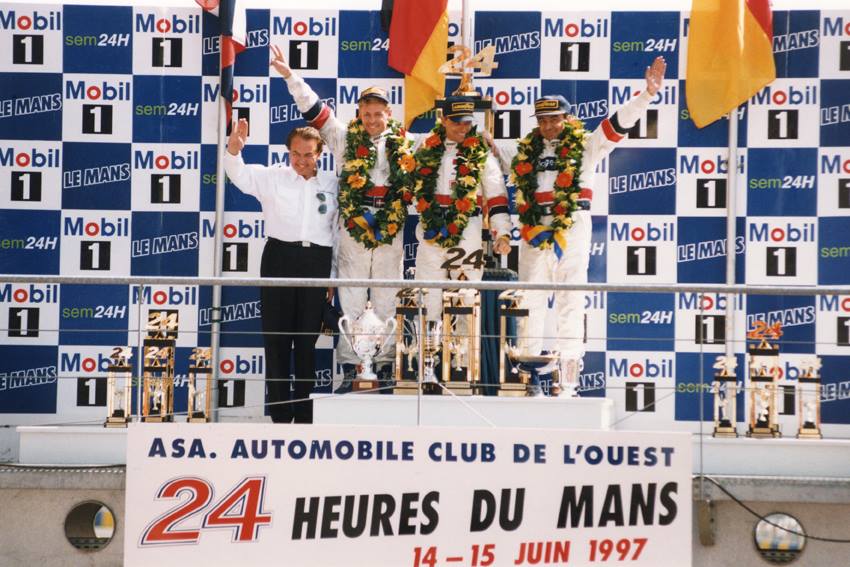

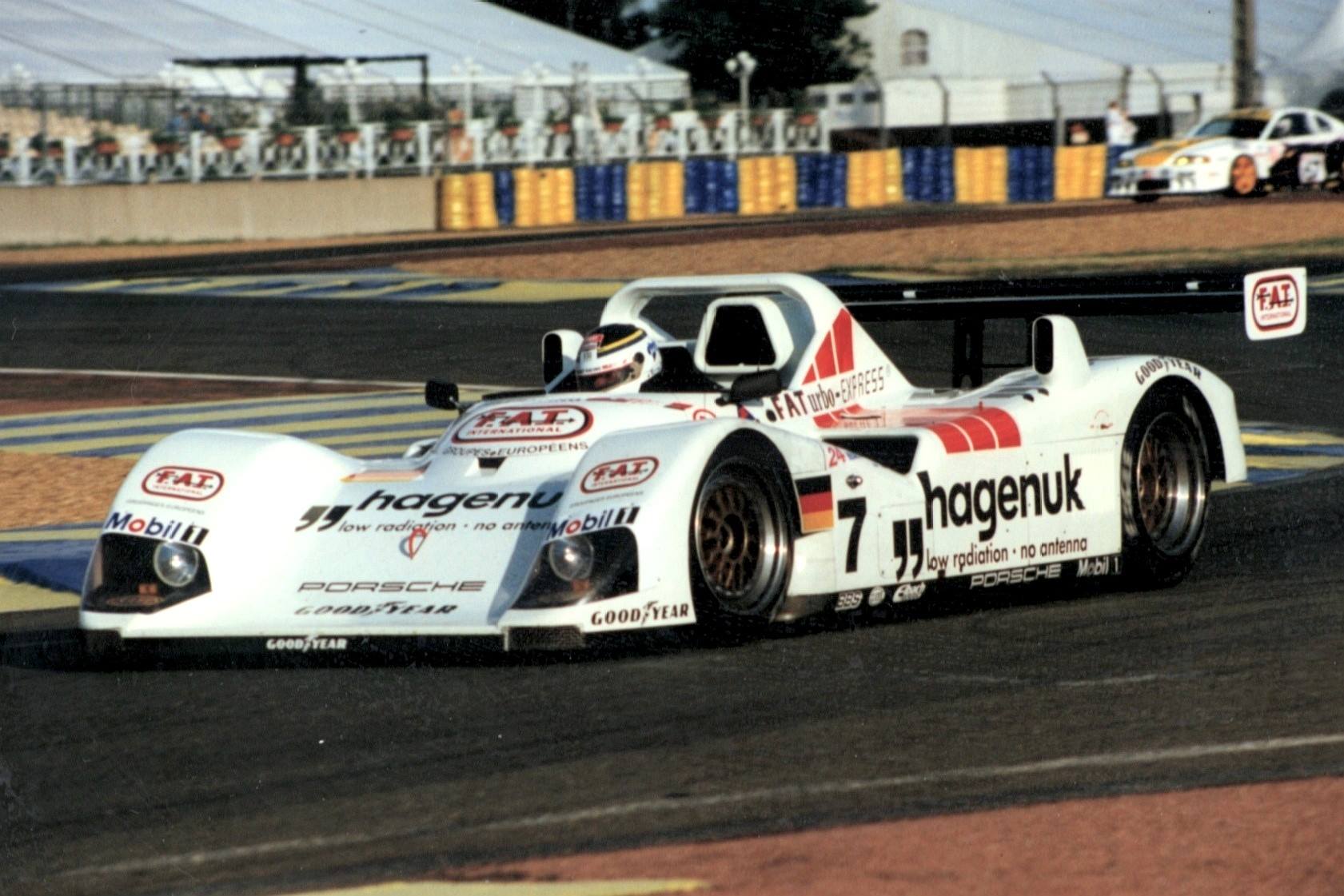
Stefan's victory at Le Mans in 1997 at the wheel of the Joest Racing TWR Porsche WSC-95, alongside Tom Kristensen and Michele Alboreto. Source: Stefan Johansson // Credit: unknown
Moving on to your sports car racing career, you drove an incredible array of cars in your career with a win at Le Mans with Joest in 1997 in a TWR-Porsche to top it all off. Of all your Le Mans drives, which car was the best to drive, and which was the most difficult and why?
The best one was probably the Audi R8, because that was just a phenomenal car in every aspect. Audi was an incredible company to work with. They were just so professional in every way, and the car when you arrived at the track was pretty much perfect in every respect when it rolled off the truck. You fiddle about with it as you do in practice, a little bit of understeer, do this, change that, but when you rolled it back into the truck after the race, the set up was virtually identical to the beginning of the week!
They were just so good to work with, and it was a comfortable car and well sorted. Even simple things were taken care of, like where all the buttons were for the switches. Everything was very logical; when it's dark at Le Mans, you've got to know where everything is, and most cars aren't like that. In most cars it's like, oh crap, we forgot about that switch and so I guess there's an empty space over there, let's just drill a hole… but everything was just perfect in the R8.

What about the cars that were maybe a bit more of a struggle?
Plenty of those at Le Mans, I can assure you. With some of them you would take your life into your hands every time you left the pit lane. A lot of them weren't very well sorted, and Le Mans is a daunting track because its speed is so high. If the car is not right, it's magnified several times more than you would have at a regular track like Silverstone, which is quite demanding, or any regular European road course.
You've also raced some legendary cars like the Porsche 956 and the rotary engined Mazda 787 B, dream racing cars for many of us. How do you describe the experience of driving them to someone whose racing experience is rudimentary? What makes them so special?
The 956 was the first of the really amazing cars of that era, because it had plenty of downforce and came at the beginning of that whole period. The first year I did it, Le Mans was without the chicanes as well. I still may have the speed record - I had it for a long time, the top speed was like 408 km/h in qualifying. I went out for the second session when it was still daylight and I got a huge tow off Hans Stuck; the boost was cranked up fully with qualifiers on, and he towed me along the whole Mulsanne Straight, all the way down! You don't really think about the speed because you get used to it, but that felt fast, I can assure you… especially going through the kink, because while it's still flat you use all of the road.
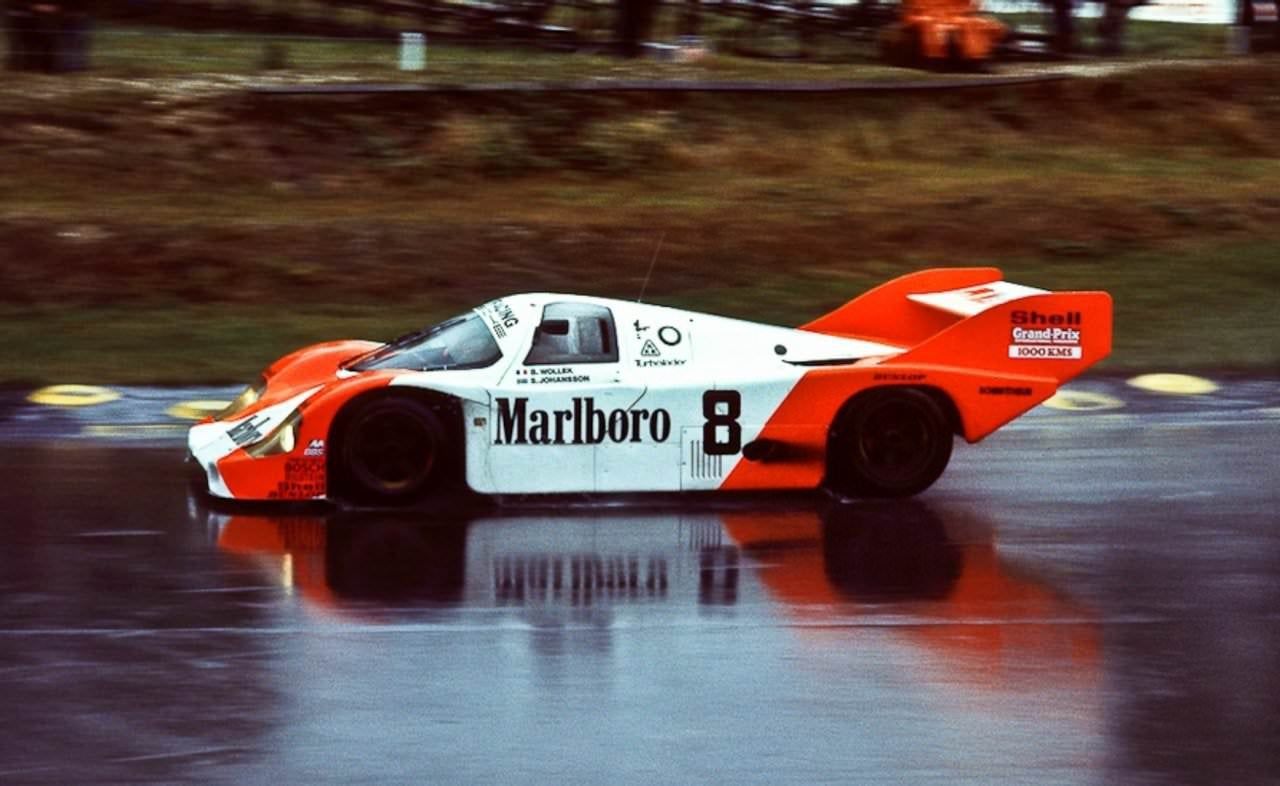
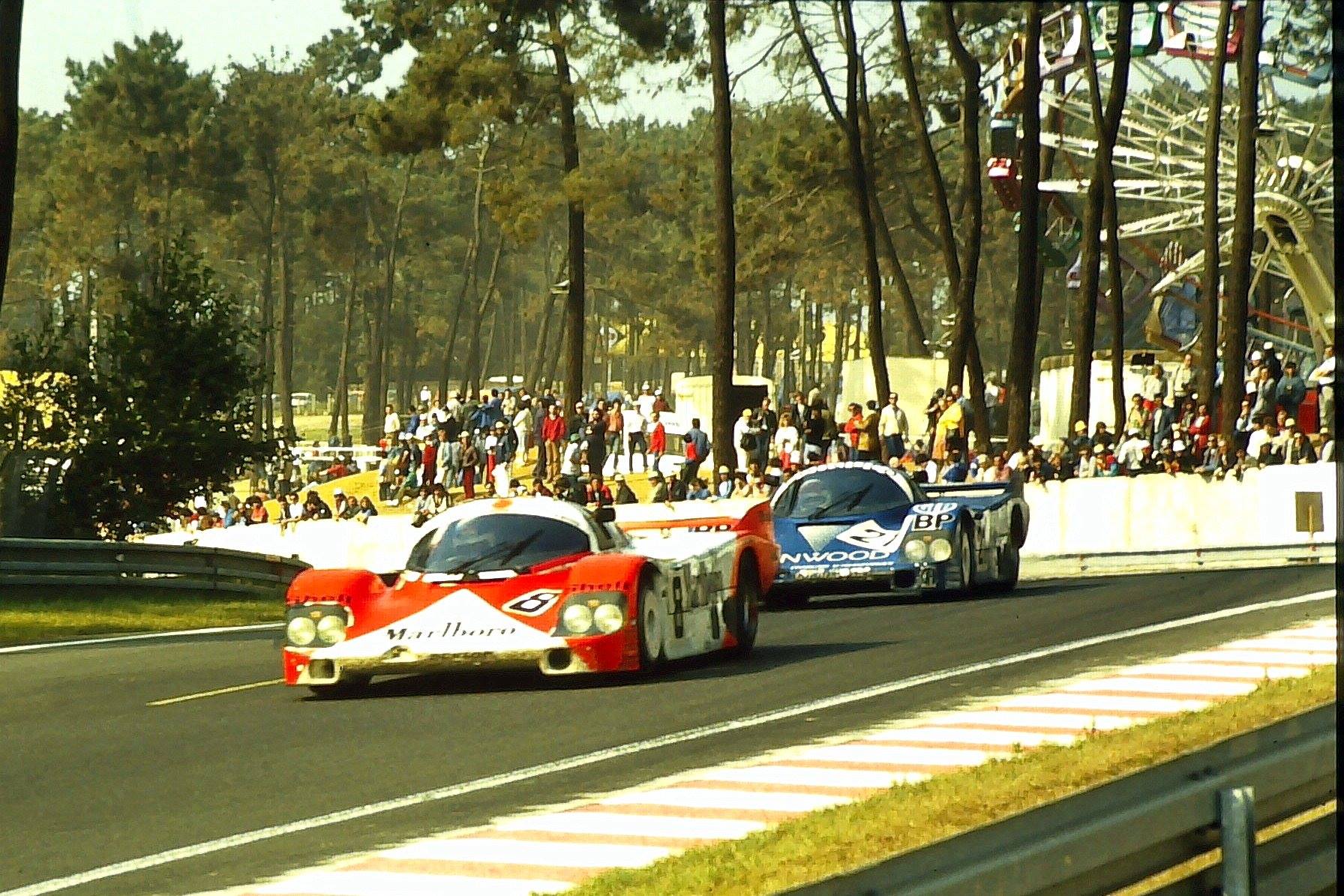

The Joest Racing Porsche 956 at Le Mans in 1983. Source: Supercar Nostalgia // Stefan Johansson
Were those cars a really physical experience as well, or were they relatively easy or light to drive?
No, they were physical, because they had no power steering and they had massive castor, 14 degrees of it, so the steering was unbelievably heavy on them. It was worse at a place like the Nürburgring for example, on the Nordschleife - I mean you couldn't hold the wheel in your hand like you normally do, it would just get ripped out of your hands because of all those long undulating bumps you have there. So you used to have to hold the steering wheel by the spokes. Literally grabbing the spokes - that was the only way you could actually hold it in your hands when you went down the long straight towards the Schwedenkreuz and then it's flat all the way through to the left hander going into the braking area. You had to yank the spokes down with your hand to be able to hold on. You're doing 360 km/h while you do that - it’s crazy fast.
Presumably - just going back to Formula 1 for a moment - it was the same thing there, all incredibly physical?
In those it was because of the manual shifting - again we had no power steering or anything, so the worst part of that was the feedback you got in the steering. Every little grain of sand gives feedback, whereas power steering takes out a lot of that, so it's a lot more comfortable in the car when you've got it.
In a race car, what do you prefer?
From a purist's point of view, I prefer no power steering and manual shift, because when that went away it took out a lot of the skilled elements for a driver, especially the shifting. Shifting was a huge part of going fast on a qualifying lap, but also keeping it together in the race. Now you can't miss a gear, it's impossible unless something malfunctions in the system, whereas back then in F1 a missed shift was typically your opportunity to pass the guy in front of you. You’d just harass them, constantly try to break their rhythm, so that eventually at some point they would miss an upshift, and that was your chance to pass them.
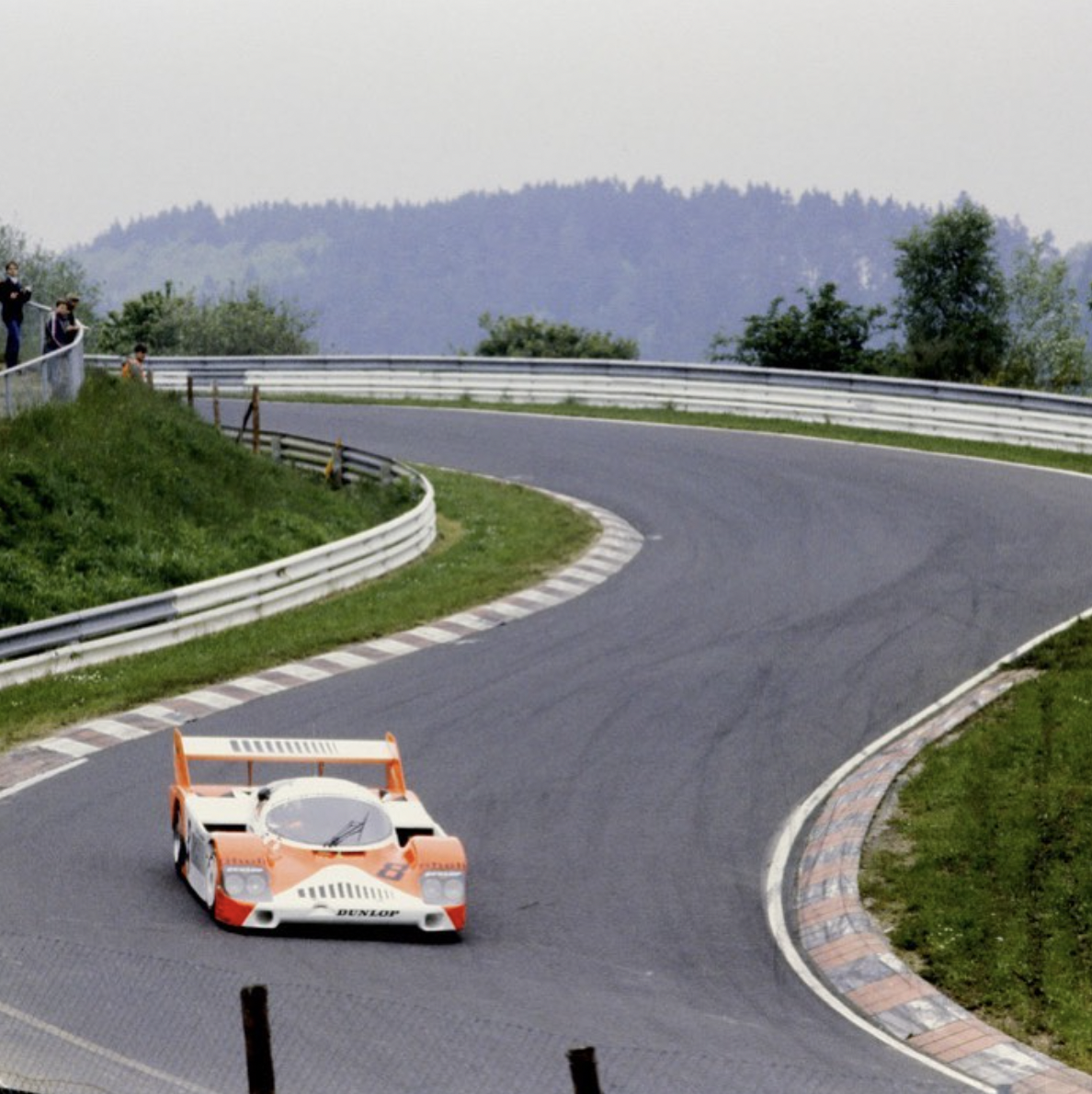
That's very interesting. Moving on from racing, you are famous for your activities outside motorsport too, including painting and watch design. What attracted you to those other disciplines?
I was always interested in them. I think every person, whatever their professional career, has other interests or hobbies that may occupy some of your time away from whatever you do for a living. I was always interested in art and design, more as a spectator than a participant. But the art really started with Elio de Angelis. We were good buddies when we were racing in F1, and when he got killed that affected me pretty badly. I don't even know to this day what prompted me to go and buy a canvas and some paint and try to do something in his memory, but that's kind of how it got started actually, and then I got hooked on it pretty early on. I found it very therapeutic to take your mind off things between races, so I then started painting in my apartment and did various bits and pieces.
It’s grown over time, but for my whole racing career it was more a hobby than anything else. Only in the last five or six years have I really started to take it more seriously as a vocation, and have started selling my works. I wasn't really comfortable selling what I did early on anyway, but I think I have found a style now that I feel comfortable with and I'm willing to show other people without being ashamed of what I'm doing.
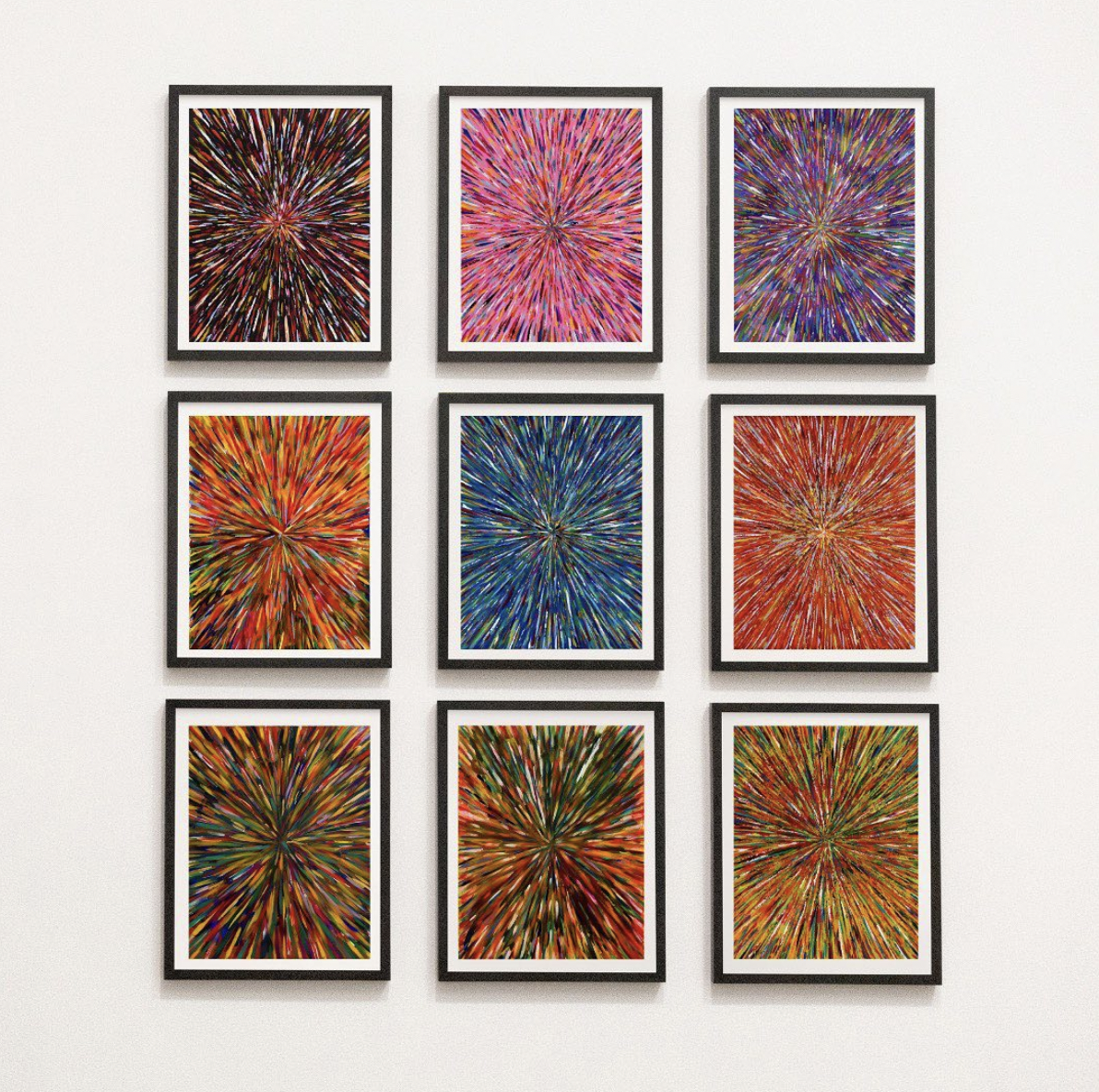

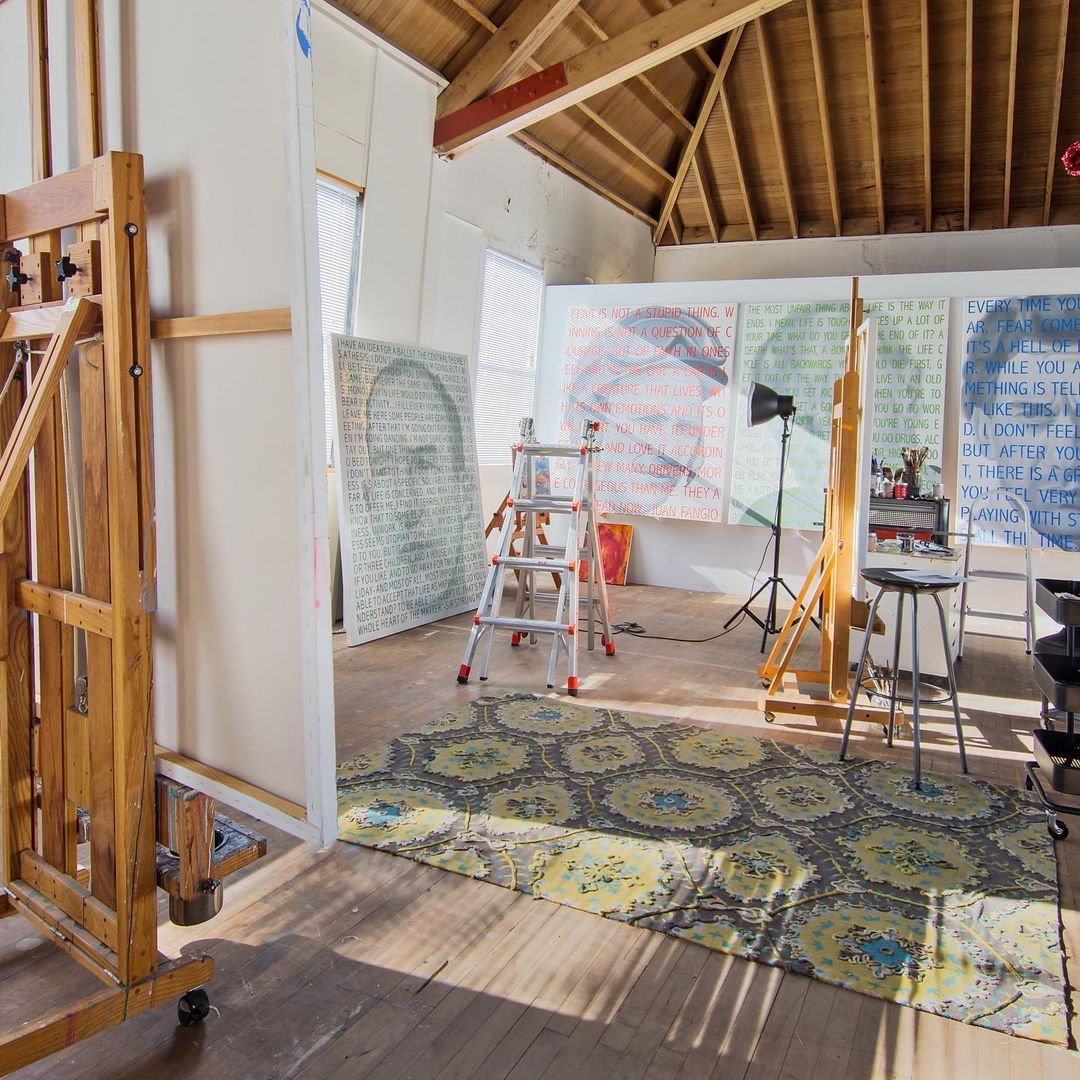
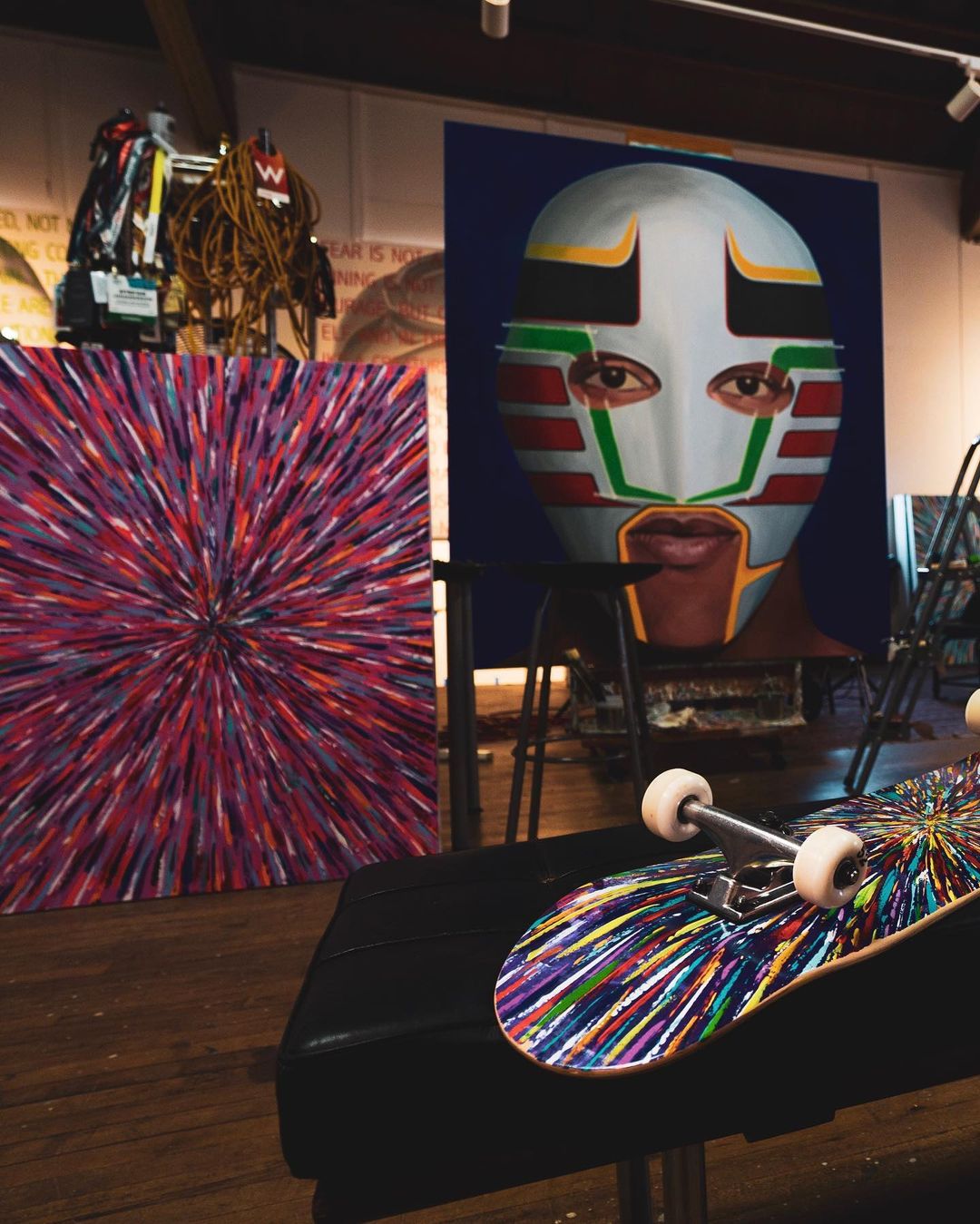
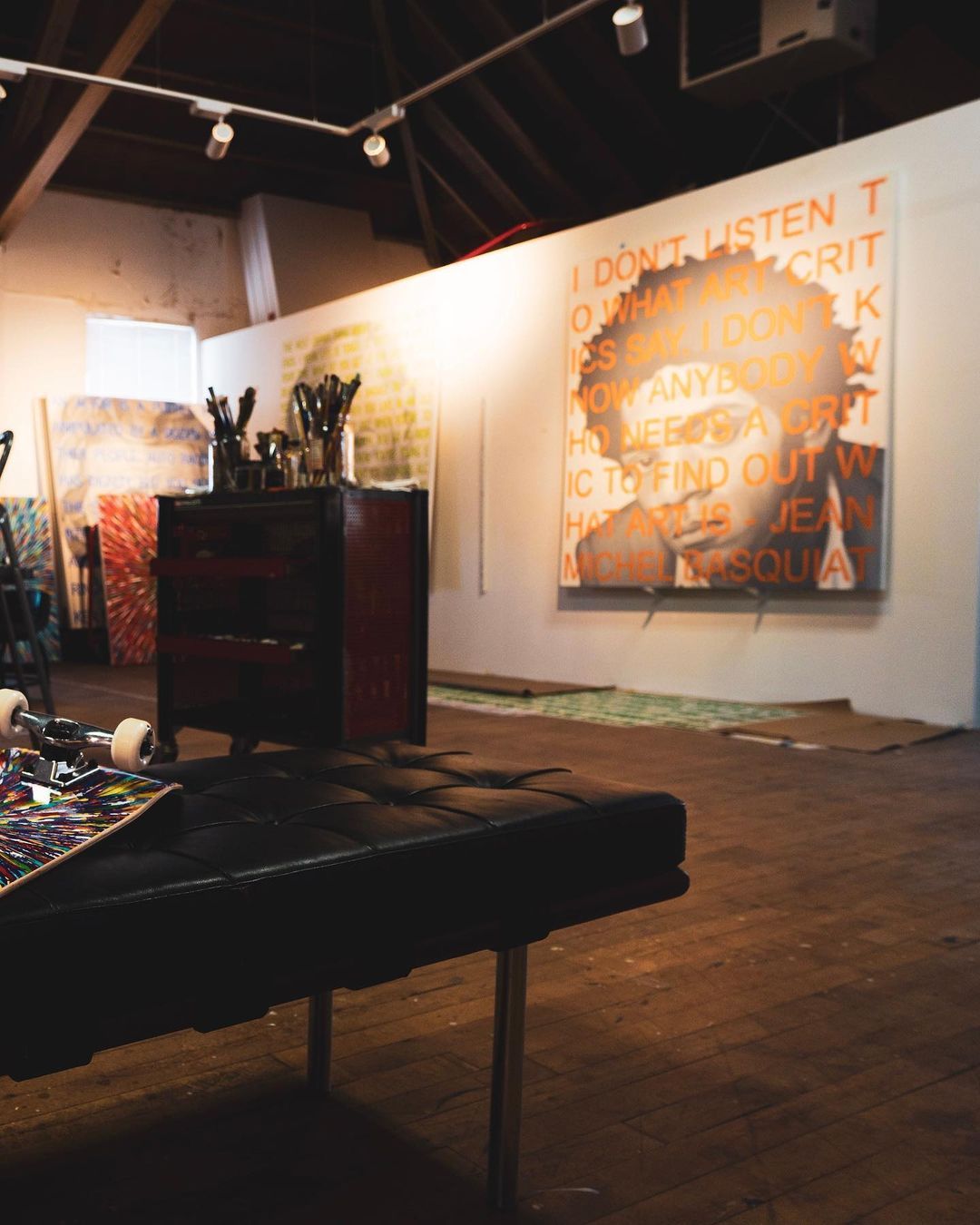
Stefan's Studio in Los Angeles. // Source & Credits: Stefan's instagram.
And the watch design as well, how did that come about?
Well, cars and watches are kind of the ‘thing’ for guys! Girls like their bags and their shoes, we have cars and watches I guess. I collected a few watches along the way, and then I was approached by a company in Switzerland at the tail end of my F1 career to endorse or be an ambassador for their brand or something - but the watches they had were not really in a style that I liked, let's say, so I suggested we collaborate on a joint design venture. That's really how it got started. Then I decided to just do it on my own rather than with another brand, so I've just been doing it ever since!
I think they have proved quite popular. I know there is a watch you have with all of the racing flags around the dial?
Yes that's very popular, one of our best sellers.
I bet other watch companies are kicking themselves that they didn't think of it first.
It’s funny, because I'm quite good friends with a lot of the big brands, the obvious ones who are involved in racing. They've all looked at doing the same, and then they find that I've actually protected the design, and it's like ‘you bastard, we wanted to do the same one!’
Never compete with a racing driver.
Exactly!



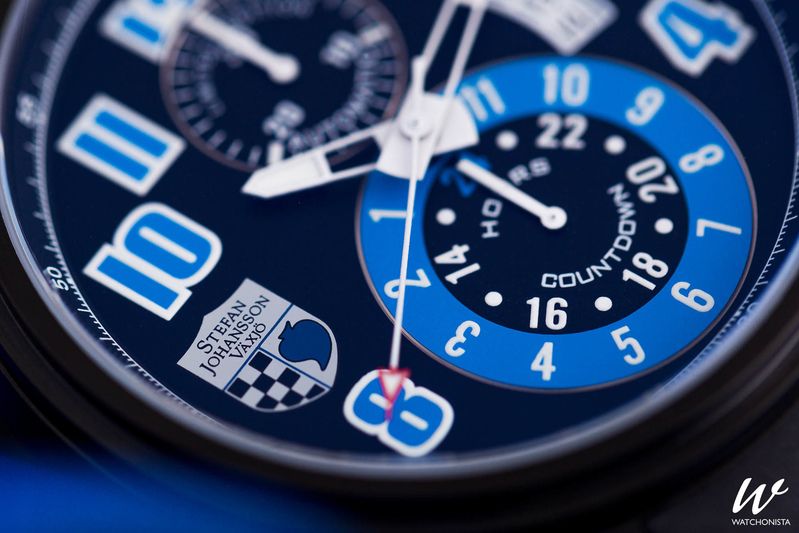
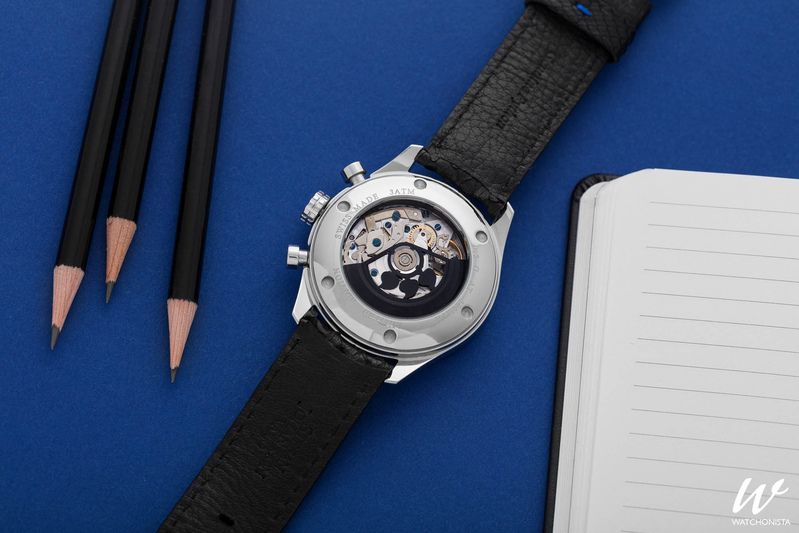
The Mark VIIIE 033 (top left), the Mark VIIIG 051 (top right) and the Mark VIIIC 012 (bottom left) by Stefan Johansson. Source: watchonista.com
How does your mindset compare when you're creating a good work of art or designing something, and driving? Is the same part of your brain working, or is there some sort of connection there?
There is actually. It is quite similar in many ways when you get into the ‘zone’ (which I know is a bit of a cliché). For me it's solitude. It's just me and I'm in my studio, I never have any music on, it's just silence, so it's almost a meditative state when I’m painting and things start to flow. It's very similar when you race a car, because you get into that same state of mind and you lose all sense of space and time. You are one with the car. You feel everything. It's like you're on some kind of a wonder drug where every sense in your body is magnified massively, vision, hearing, smell, everything, all the senses just come together and everything is part of what you do with the car.
When you paint it's actually quite similar to that, once you get the flow. It takes me a lot longer to get dialled in when I paint, because I've been driving cars my whole life since I was a little kid! The painting is a bit of a grind sometimes to get going, but once I get it going, then the same thing happens. I'll be in my studio and before I know it, it's six o’clock in the morning. You just completely lose all sense of time, it just starts flowing and it's a wonderful space to be in.
We've had some guests on the podcast who make music too, and they're into cars, and there seems to be this interesting creative connection between these sorts of activities.
I think it's all very similar in the end, because driving a race car is a bit of an art form in that you just use your senses, and you improvise all the time; although every lap is the same, it's never the same. You are on full alert the whole time, but I think it's similar if you're a writer or musician. There are so many different forms of art, but I think it all connects to and comes from the same source at the end.
A sort of purity, I suppose.
Yes, exactly.
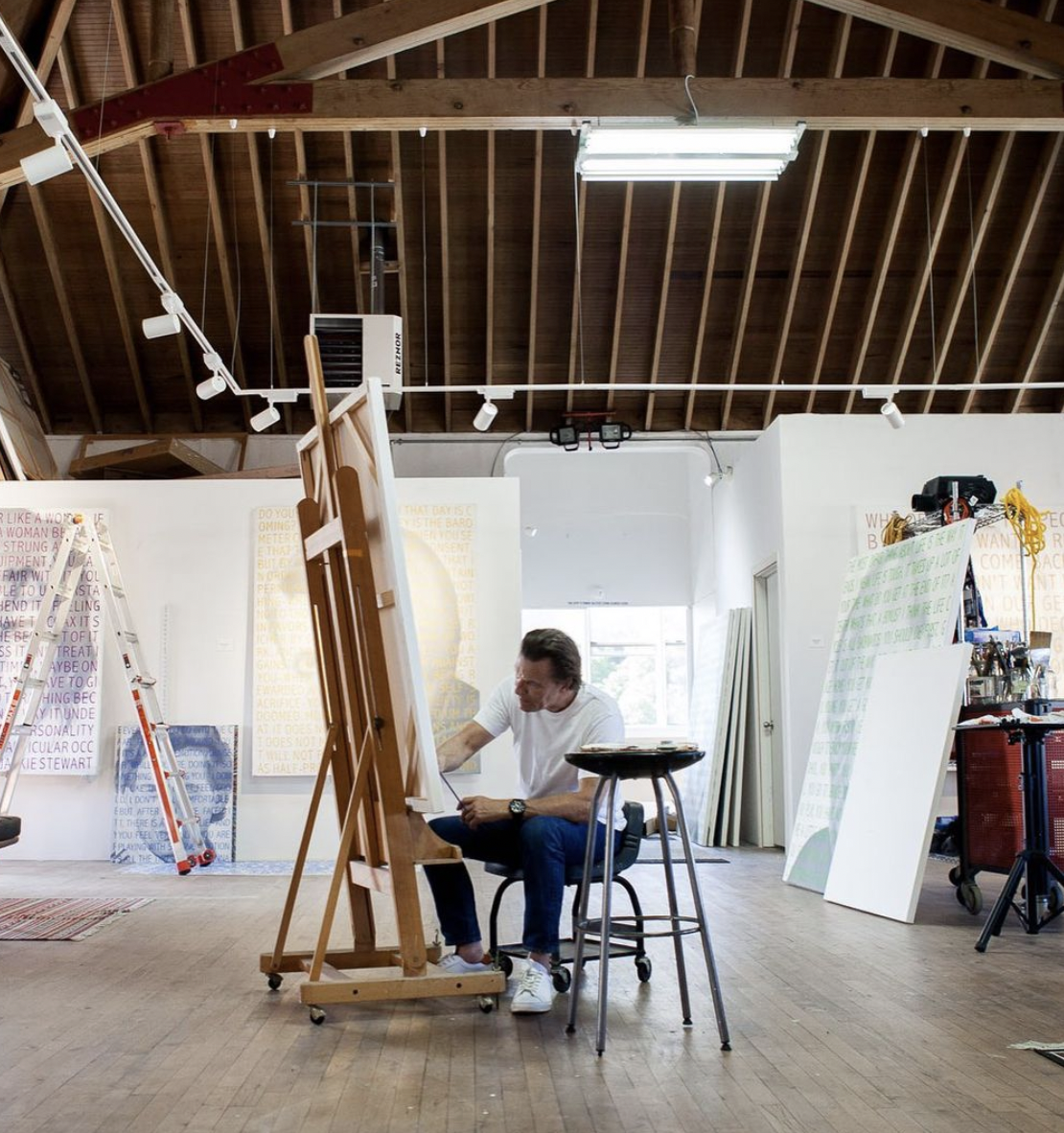
We're coming up on time now and we always end with some quick fire questions. The first one is: if you could go back and relive one race from your career which one would it be and why?
Probably my second race with Ferrari when I was leading at Imola and I ran out of fuel, because had I known I had a little crack in the inlet manifold, I would and could have won it! Our fuel calculations were absolutely bang on but the engine was actually compensating for it, pushing in more fuel to have the same air/fuel mixture. If I ever drove a perfect race, that was probably the one, because I was spot on with the fuel consumption and we still had plenty left. I could have actually just accommodated more for the leak but… should’ve, could’ve, would’ve, it's one of those things. Had I won that race I think everything would have changed dramatically, not only for me (because the first one is always the hardest one, knowing that you can win a Grand Prix) but also the dynamic inside the team would have changed completely. It's all those little things that makes a huge difference in the bigger picture.
The second question is: what is one piece of advice you would give to a driver who wants to be competitive on a racing grid?
Be true to yourself, first of all. Don't try to bullshit yourself with a bunch of excuses if you're not feeling like you're good enough; if you feel, really feel in your heart and in your gut that you can do this and you can win races, then never give up. Just keep going because the door will eventually open, and if you don't give up, something will eventually happen. Just keep willing it, because it will happen.
And lastly: who is your favourite artist, and who inspires you most in your creative endeavours?
My favourite artist is someone who is not very well known (but his prices are through the roof…), an American artist called Mark Tansey. His art is amazing, really cool, very figurative, on large canvases. His subjects and the way he brings the whole work together is really interesting, and his technique is fantastic - I like figurative art as well, quite detailed, so for me he's amazing.
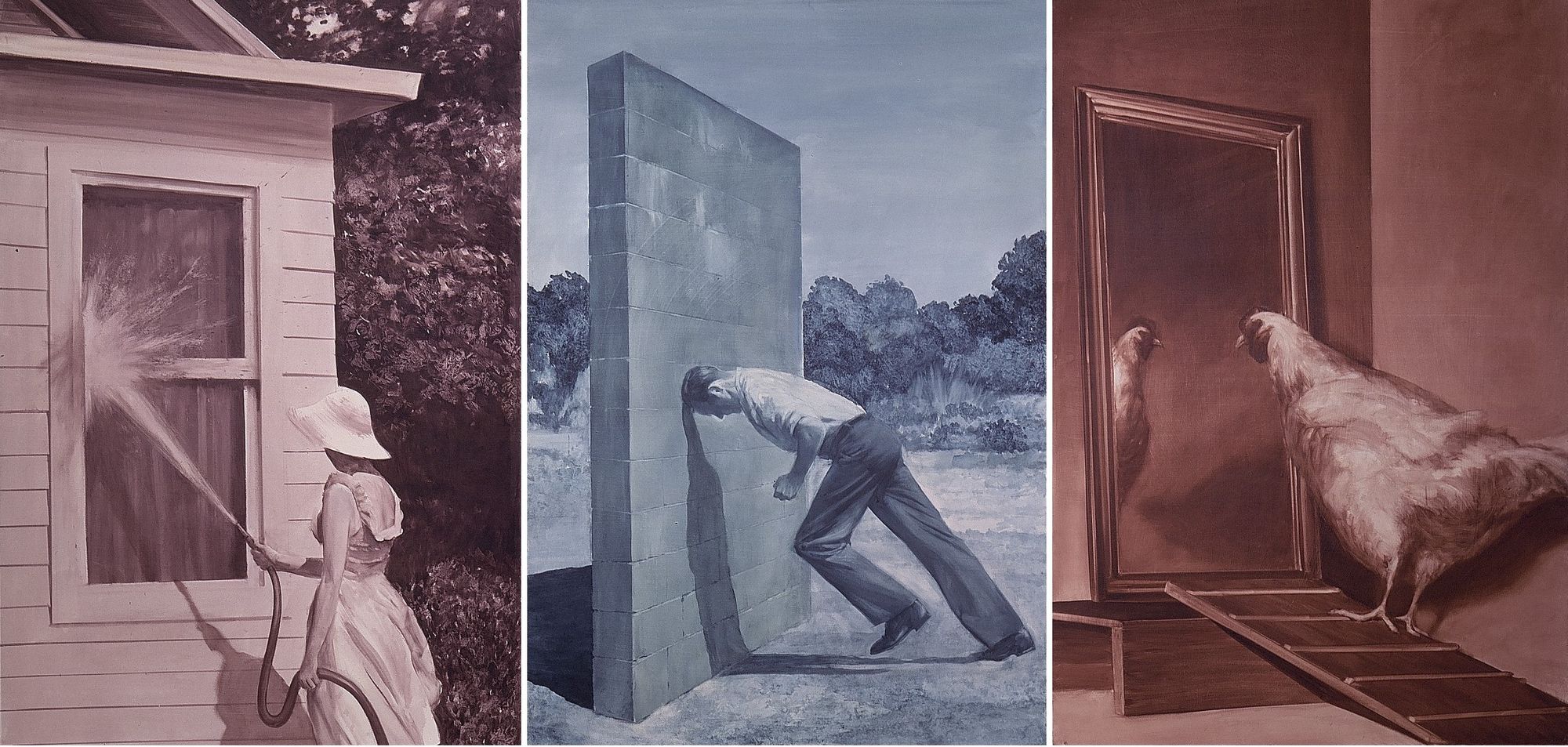
As far as inspiration is concerned, it comes from everywhere really. I read a lot, so if I see something that suddenly pops out, it influences me. The figurative paintings I have done lately, the ‘quote’ paintings, are an example. It's like if you write a song, you can start with the lyrics and then add the music, rather than the other way around, and they are kind of the same thing. If I read something that makes me react, then hopefully that will translate to the viewer through whatever their reaction may be, whether it makes them laugh, become angry, thoughtful, sad, whatever it is. That’s what I'm trying to achieve with them, and then I add the portrait of the person afterwards; it’s that interaction between the text and the portrait that I'm exploring with these particular paintings.
Inspiration comes from everywhere. You could be walking down the street in a strange city somewhere when you see something, it can be anything really. It just depends on what you see, and what state of mind you're in at the time.
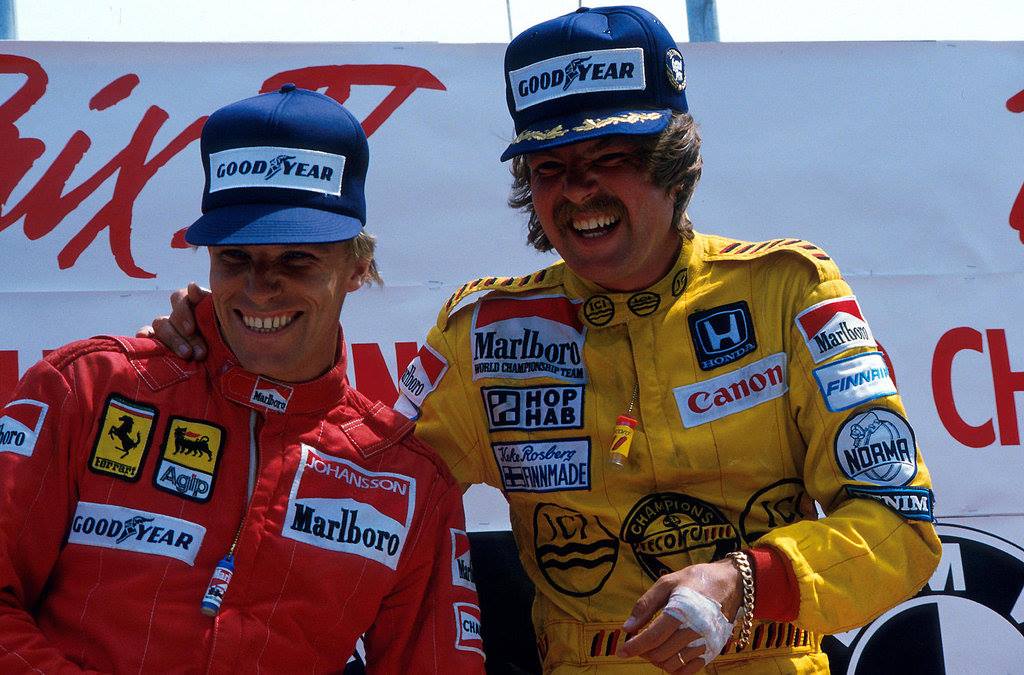
And there we have it. Our time is up, so all that's left for me to do is to thank you Stefan for such an enjoyable interview, and for taking the time to join us today.
Of course, my pleasure, any time!
You can find out more about Stefan's art on his website at https://stefanjohansson.art/ or follow him on Instagram at https://www.instagram.com/stefanjohanssonofficial/.

